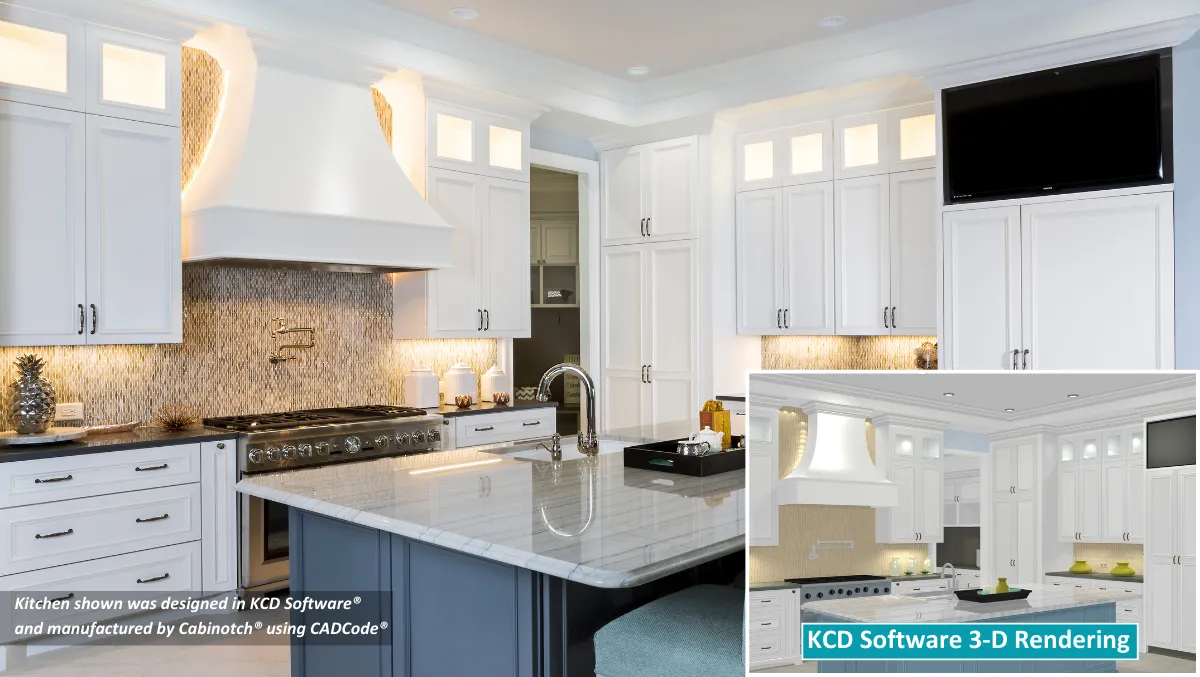Table of Contents
3D-Printing and the Future of Manufacturing
by Suzanne Van Gilder
Time waits for no one, and neither does technology. Disruptive advances in one area of manufacturing inevitably influence others. Considering the open-source philosophy underlying most experimental 3D-printing endeavors, the time when the technology becomes pervasive is likely to be sooner rather than later.
News stories of 3D-printed food, toys and even body parts sensationalize the emerging process, making it seem like science fiction. Yet, it has promise. Examining the use of technology in different areas of manufacturing – not just the how, but also the why – provides insights into the shifting paradigm of modern industrial production and the new opportunities that come with it.
A great example of this is the Strati, the first-of-its-kind concept car that was 3D printed, trimmed, assembled and driven during the 2014 International Manufacturing and Technology Show (IMTS). The entire project was completed in a week. Local Motors, together with the Association for Manufacturing Technology, Cincinnati Incorporated and the Oak Ridge National Laboratory, printed all the parts of the life-size working vehicle that could be integrated into a single material. The process took 44 hours using Broad Area Additive Manufacturing (BAMM), a large-scale method of 3D-printing. Thermwood carried out the subtractive portion of the project on the third day, trimming and shaping the body into a streamlined form with a 5-Axis CNC router. Final assembly, including the mechanical components sourced from Renault’s Twizy electric powered city car, was completed in two days.
While the exhibition does have its own degree of fanfare, it is also thought provoking on several significant levels. Most obviously, it brings the leading edges of machinery, material and software technologies together in one application. More subtly, Local Motors presents 3D-printing as one method for breathing new life into the North American automotive industry, which suffers, in part, due to the limits of an archaic manufacturing model. The project also recognizes that as technology grows more flexible, the end user becomes more influential. “People focus on the Strati, but it is really more about the process itself,” says James Earle, advanced manufacturing engineer for Local Motors and lead engineer for the project. “We are changing manufacturing into micro-manufacturing. The auto industry faces three significant challenges to creating and iterating vehicles: count, weight and initial cost of tooling. We are developing processes to make it faster, easier and much more efficient to bring new, customized designs to market.”
Re-Imaging Automotive Manufacturing
Headquartered in Phoenix, the Local Motors platform combines global co-creation and local micro-manufacturing to bring innovations to market at unprecedented speed.
 On the development side, the company stewards an on-line group of enthusiasts from all over the world, and continually crowd-sources to develop vehicle concepts and solve complex mechanical problems. This ever-growing collection of innovations is used to design vehicles tailored to local markets. All information and advances are available to the public online for free.
On the development side, the company stewards an on-line group of enthusiasts from all over the world, and continually crowd-sources to develop vehicle concepts and solve complex mechanical problems. This ever-growing collection of innovations is used to design vehicles tailored to local markets. All information and advances are available to the public online for free.
For the 3D-printing exhibition at ITMS, which was held in Chicago, Local Motors staged a six-week challenge tasking members of the community to design a vehicle specifically for low-speed city driving. The Strati, designed by Michele Anoé of Italy, was the winning entry among more than 200 received from 30+ countries.
On the production side, Local Motors sets up agile micro-factories in local markets.
“The idea is to create flexible work cells with modern manufacturing methods, such as 3D-printing, that are capable of efficient production,” says Earle. “Traditionally, car manufacturers require millions of square feet. They create tool and die and then mass-produce parts to recoup the cost of the tooling. Then the standard final product has to be sold across all markets. Our approach is a paradigm shift.”
In addition to producing vehicles to sell, Local Motors uses the micro-factory format to empower the maker community and drive innovation. The general public is welcome to schedule tours or attend the monthly open house. Those interested in the co-creative process have the opportunity to collaborate with the Local Motors lab team on projects. And for the true enthusiast, the immersive Build Program allows people to construct their own Rally Fighter – a street legal car developed specifically for off-roading in desert regions. The goal of Local Motors CEO, Jay Rogers, is to have 100 micro-factories operating worldwide in the next 10 years.
Technology Advancing
During the ITMS, Local Motors set up a micro-factory featuring two primary pieces of machinery – one developed especially for the project, and one already commercially available for processing wood products, plastics and composites.
Cincinnati Incorporated (the oldest and only North American manufacturer of laser cutting systems, press brakes and shears for the metal fabrication industry) developed the BAAM 3D-printer used for the additive portion of Strati’s fabrication. This machine is similar to existing desktop 3D-printing technology (both use a process called fused deposition modeling), except larger scale for industrial production. Rather than plastic filament, the feedstock is pellets, which are both faster to process and less expensive. The body and chassis of the car were “printed” with a carbon fiber composite ABS, supplied by Sabic.
The subtractive portion of smoothing and shaping the surfaces was done with a Thermwood 5-Axis Model 70 10×15 CNC router. “There are so many ways this equipment can be used outside of the way things have always been done,” says Brent East, product and software manager for Thermwood. “The technology crosses over from wood and plastic to composites. For Strati, we used traditional processes and tool paths. The differentiating factor from material to material is the tooling.” East’s team provided tooling manufacturer Royce Ayr with a sample of the composite material for analysis prior to the project to ensure the machine had the right tools for the job.
“By using those two machines to fabricate the structure of the vehicle, we eliminated the cost of casting tool and die, as well as stamping, a significant amount of assembly and finishing,” says Earle. “With the 5-axis router we were able to do some really cool aesthetic work on the car without adding extra production steps and associated expenses.”
“One of the main tenants of our business is getting the designs into the digital realm so that we can collaborate with all sorts of people all across the world,” says Earle. “It really opens up a lot of new avenues for discovery and technology.” To that end, the programming behind the Strati project is surprisingly straightforward. “You start with a CAD file, which is probably the most time-consuming part. Once you have that model, you can translate it into an STL (surface tessellation language), which basically transforms the solid shape into a surface model. An algorithm splits that into layers, which dictates how much plastic the machine puts down on one plane. Then the program draws tool paths around it,” says Earle. “The challenging part for the additive process was that the available software is powerful on the small-scale, but underdeveloped for large-scale applications. So we had to fine tune.” For the subtractive portion, East used the same CAD file to program the 5-Axis router offline with standard Mastercam software.
“It is going to be interesting to see how this evolves as our community continues to develop it into a commercially sold vehicle, because it is very different from the way things are traditionally done,” says Earle. “We are relying on technology that is evolving with us.”
A Macro/Micro Future
The same paradigm shifts in manufacturing that are affecting the automotive industry are at play within secondary panel processing. Already in North America, the micro-factory concept is organically taking shape. Flexible, scalable technologies offer manufacturers tremendous opportunities to efficiently expedite product development and meet customer demands on a local level.
Large furniture manufacturers are using in-house micro-factories in conjunction with 3D-printing, both conceptually and in practice. The programming process gives new insights into the internal geometry of objects, leading to new designs. 3D-printing also allows for rapid prototyping and short runs of even complex structures.
Meanwhile, Cabinotch, a company that only produces click-together custom cabinet boxes, is establishing a network of small, state-of-the-art work cells to serve specific local markets.
And that is just the beginning.
“Sometimes people doing wood products don’t realize that their machines and software are capable of branching out into other materials – plastics and composites – and other applications. They do what they are used to doing despite the fact that most of the market is growing through differentiation,” says East. “It is not enough that the technology is advancing. We also have to have the philosophical and intellectual advancements to apply it.”
“We are changing manufacturing into micro-manufacturing. The auto industry faces three significant challenges to creating and iterating vehicles: count, weight and initial cost of tooling. We are developing processes to make it faster, easier and much more efficient to bring new, customized designs to market.”
James Earle, advanced manufacturing engineer, Local Motors, lead engineer for the project.










